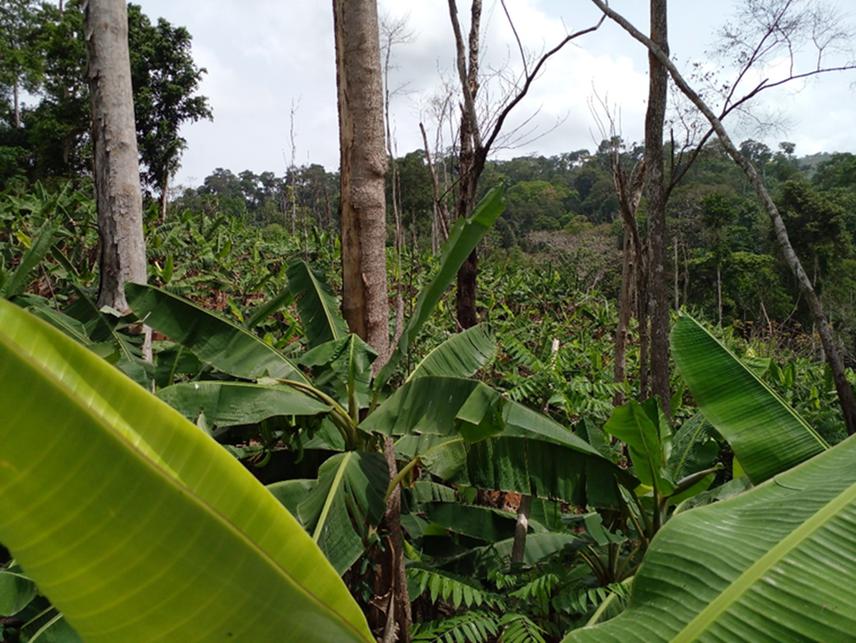Enoch Gyamfi-Ampadu
Natural and environmental resources have over the years dwindled especially in tropical zones due to population growth, unsustainable harvesting regimes, natural disasters and climate change. Among the resources that are mostly affected are forest and water resource, which leads to biodiversity lose and ecosystem malfunctioning. Human factors are found to contribute immensely to dwindling naturel and environmental resources. One of such areas that has seen high rise in anthropogenic factors contributing to biodiversity loss is the Lake Bosomtwe catchment in Ghana.

Illegal farms spotted in the Bosomtwe Range Forest Reserve.
The catchment which consists of the Lake Bosomtwe, Bosomtwe Range Forest Reserve and mountain forms a unique blend of ecosystems. It was declared as a Biosphere by the United Nations to enhance its conservation. However, the purpose for the declaration is yet to be fully realised. Therefore, this project seeks to first conduct a spatial and temporal change detection analysis of the forest and lake ecosystems between 1991 and 2021 at a five- year interval with the use of Remote Sensing and Geographical Information System (GIS) technology. This is envisaged to provide quantitative information of the dynamics and trends of change in the two critical ecosystems. The second phase will be the engagement of fringe communities to assist in planting of indigenous tree species identified bare sites around the Lake Bosomtwe to minimize surface runoff that pollutes it.
The third phase will be the engagement of fringe community members through training forums, advocacy, education and awareness creation on biodiversity conservation of the lake and forest ecosystems based on the information derived from the spatiotemporal analysis. It is envisaged that the maps produced from the spatiotemporal analysis will provide evidence of change that could arouse the interest of the community members in contributing to biodiversity conservation.
The project is critical as it is expected to provide information that enhances advocacy for the biodiversity and ecosystem conservation of the Lake Bosomtwe Biosphere through information sharing with other civil society groups and media. The information will also be shared with government institution such as the Forest Services Division and the Water Resource Commission to enable them develop strategies towards conservation. Furthermore, the quantitative information will serve as a baseline for similar future research.